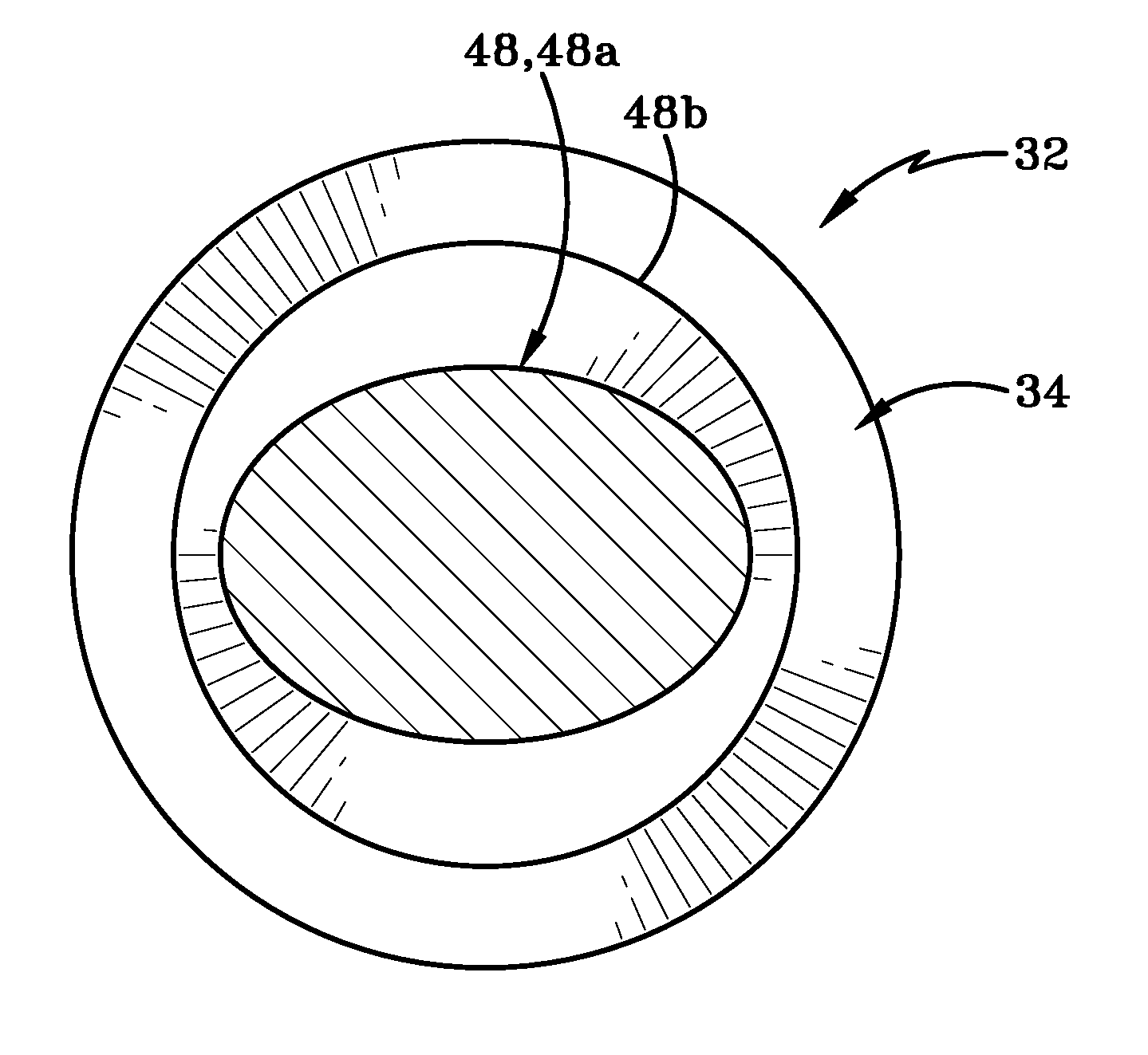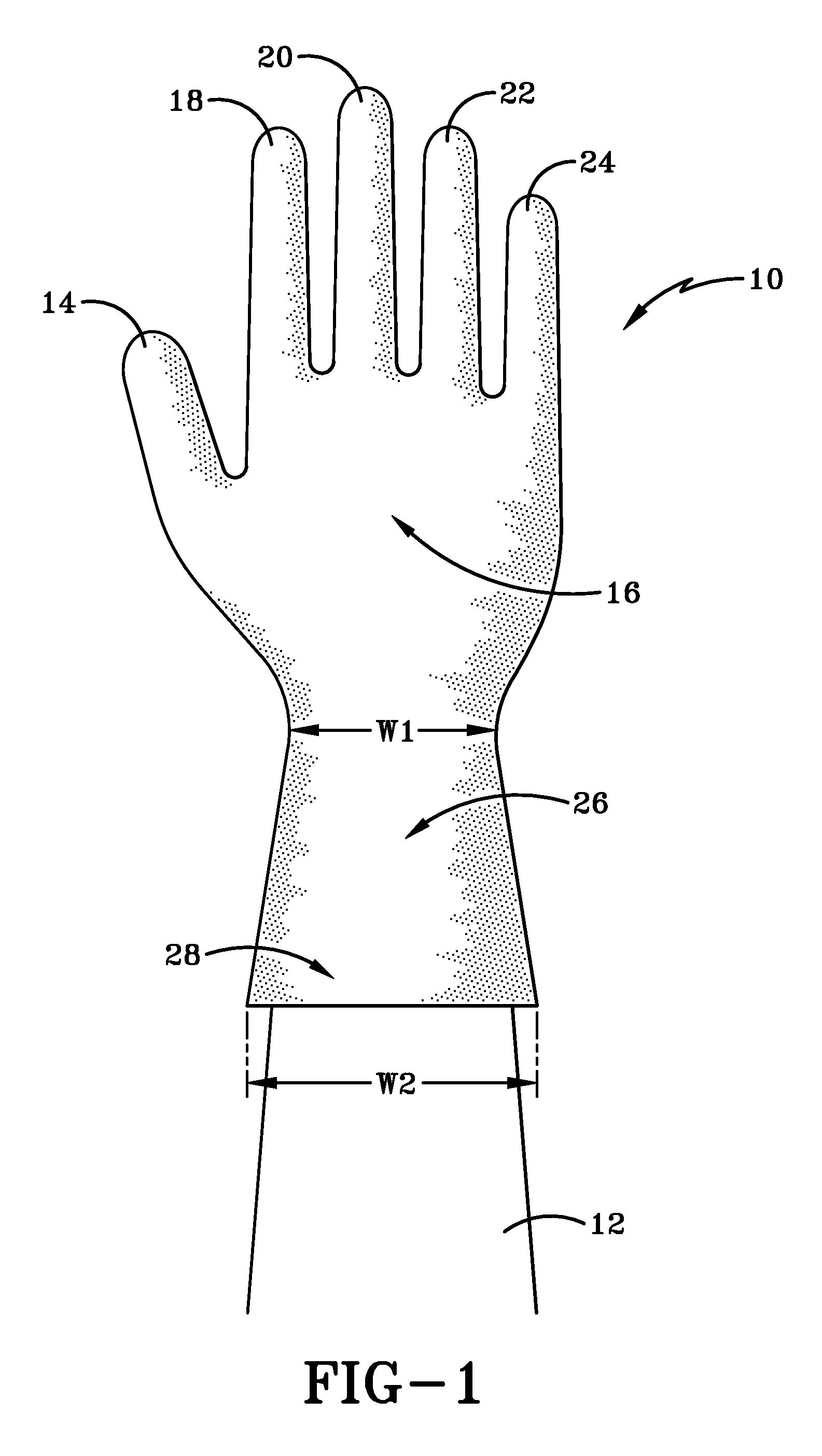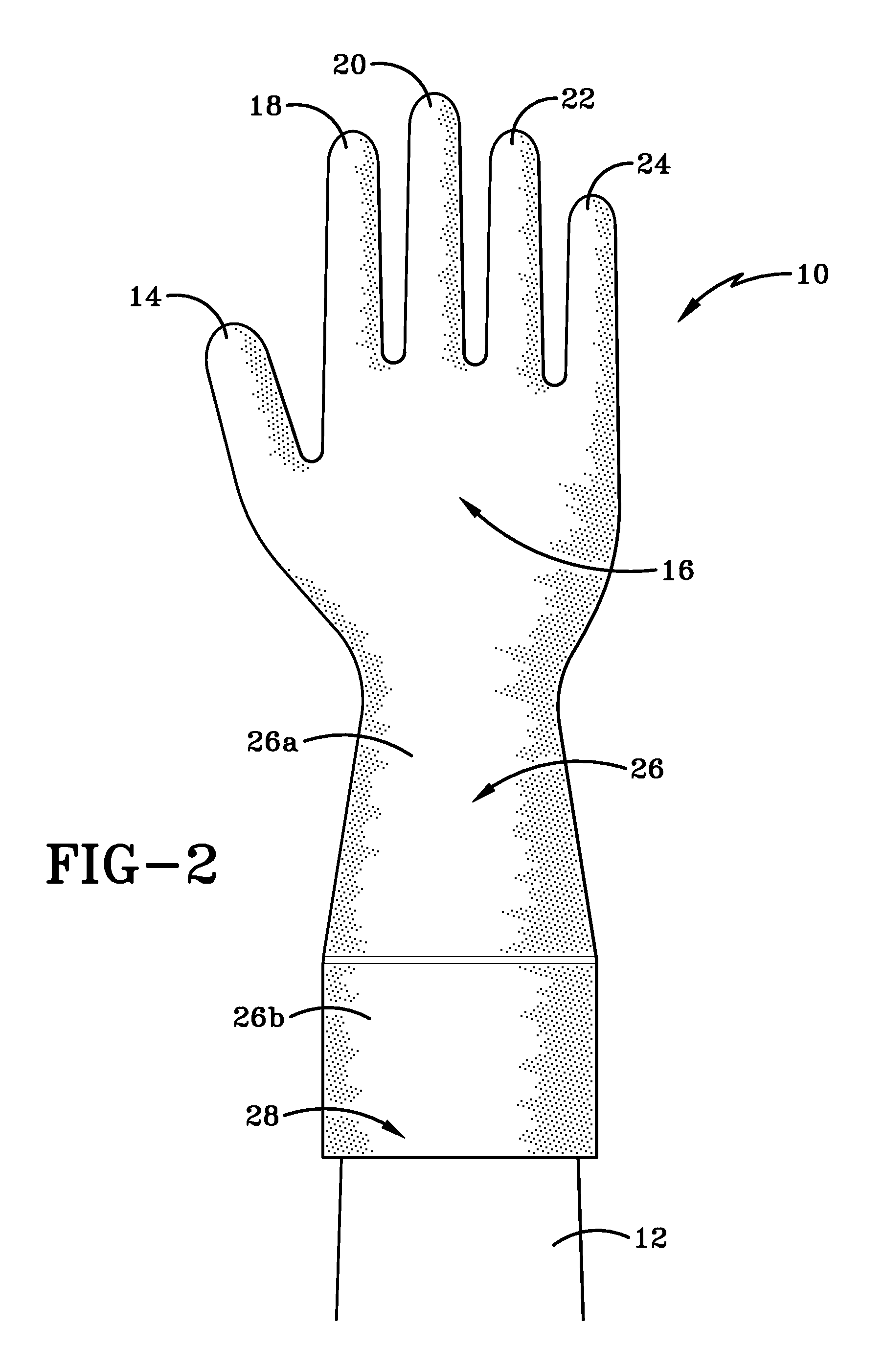Method of fabricating a glove with a widened cuff area
a technology of cuff area and dipped gloves, which is applied in the field of gloves, can solve the problems of difficulty in putting gloves on and/or taking gloves off without damaging gloves, and achieve the effect of being easy to put on and remove, and less inclined to break or become damaged
- Summary
- Abstract
- Description
- Claims
- Application Information
AI Technical Summary
Benefits of technology
Problems solved by technology
Method used
Image
Examples
second embodiment
[0030]FIG. 1 shows that wrist region 26 gradually increases in width from proximate palm region 14 to proximate cuff 28. So, the width of cuff 28 is the second width “W2”. FIG. 2 shows the ambidextrous glove 10 where the first section of wrist region 26 gradually increases in width from the first width “W1” to the second width “W2”. Second section of wrist region 26 starts where wrist region is of the second width “W2” and the second section terminates at cuff 28. However, from where wrist region 26 initially reaches the second width “W2” to the point where wrist region 26 terminates in cuff 28, the second section of wrist region 26 is of a substantially constant width, namely second width “W2”.
third embodiment
[0031]FIG. 3 illustrates the ambidextrous glove 10. In this embodiment, the second section of the wrist region 26 of glove 10 is rolled to form a bead 30. Bead 30 extends around the entire rim of cuff 28 and comprises a rolled and therefore thickened region which serves to strengthen cuff 28. Bead 30 is thicker than the rest of wrist section and this thicker and stronger bead 30 aids in resisting tears in cuff 28 and therefore wrist region 26 as glove 10 is pulled on or taken off.
[0032]In each of the first, second, and third embodiments of the glove 10, at least a portion of glove 10 will conform to the hand of the wearer. The portions of the glove 10 which will tend to conform to the hand of the wearer may include the thumb region 14, index finger region 18, middle finger region 20, ring finger region 22, little finger region 24, palm region 16, and at least part of the first section of wrist region 26. In these aforementioned locations, an interior surface of glove 10 will abut or...
fourth embodiment
[0041]FIG. 7 shows a glove in accordance with an aspect of the invention. Glove 110 is a hand-specific glove as opposed to ambidextrous glove 10 shown in FIGS. 1 and 2. In particular, glove 110 is shaped to be worn on a workman's left hand. A glove to be worn on the workman's right hand will be a mirror image of glove 110. Glove 110 may be fabricated out of nitrile or latex or any other material which causes glove 10 to generally conform to a hand of a person wearing glove.
[0042]Glove 110 includes a digit region which extends outwardly generally in a first direction from a palm region 116. The digit region includes a thumb region 114, an index finger region 118, a middle finger region 120, a ring finger region 122, and a little finger region 124. Because glove 110 is a hand-specific glove, the index finger region 118, middle finger region 120, ring finger region 122, and little finger region 124, are all aligned along a common axis. In other words, when glove 110 is viewed from the ...
PUM
| Property | Measurement | Unit |
|---|---|---|
| cross-sectional shape | aaaaa | aaaaa |
| cross sectional shape | aaaaa | aaaaa |
| length | aaaaa | aaaaa |
Abstract
Description
Claims
Application Information
 Login to View More
Login to View More - R&D
- Intellectual Property
- Life Sciences
- Materials
- Tech Scout
- Unparalleled Data Quality
- Higher Quality Content
- 60% Fewer Hallucinations
Browse by: Latest US Patents, China's latest patents, Technical Efficacy Thesaurus, Application Domain, Technology Topic, Popular Technical Reports.
© 2025 PatSnap. All rights reserved.Legal|Privacy policy|Modern Slavery Act Transparency Statement|Sitemap|About US| Contact US: help@patsnap.com



